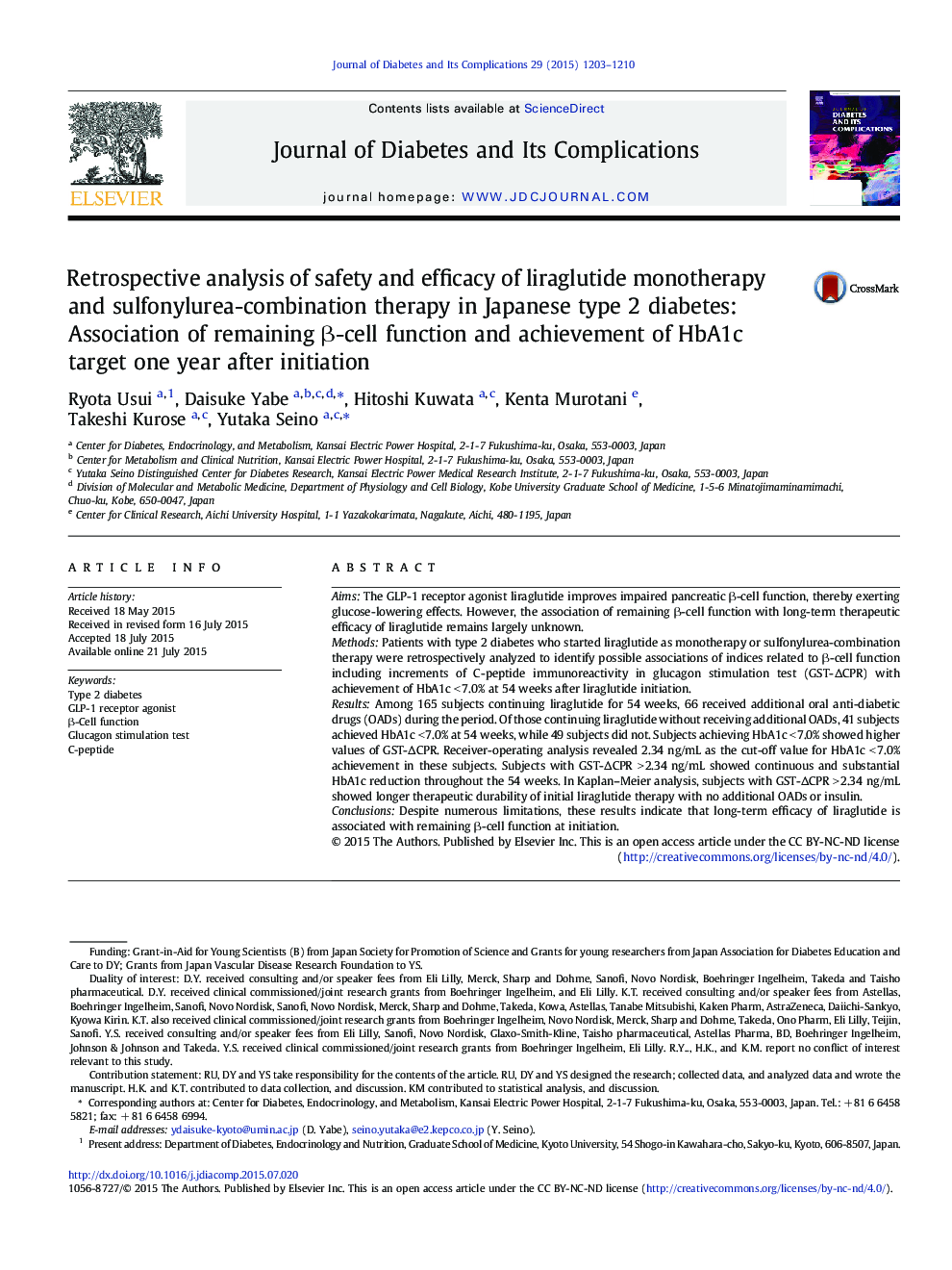| Article ID | Journal | Published Year | Pages | File Type |
|---|---|---|---|---|
| 5902351 | Journal of Diabetes and its Complications | 2015 | 8 Pages |
AimsThe GLP-1 receptor agonist liraglutide improves impaired pancreatic β-cell function, thereby exerting glucose-lowering effects. However, the association of remaining β-cell function with long-term therapeutic efficacy of liraglutide remains largely unknown.MethodsPatients with type 2 diabetes who started liraglutide as monotherapy or sulfonylurea-combination therapy were retrospectively analyzed to identify possible associations of indices related to β-cell function including increments of C-peptide immunoreactivity in glucagon stimulation test (GST-ÎCPR) with achievement of HbA1c < 7.0% at 54 weeks after liraglutide initiation.ResultsAmong 165 subjects continuing liraglutide for 54 weeks, 66 received additional oral anti-diabetic drugs (OADs) during the period. Of those continuing liraglutide without receiving additional OADs, 41 subjects achieved HbA1c < 7.0% at 54 weeks, while 49 subjects did not. Subjects achieving HbA1c < 7.0% showed higher values of GST-ÎCPR. Receiver-operating analysis revealed 2.34 ng/mL as the cut-off value for HbA1c < 7.0% achievement in these subjects. Subjects with GST-ÎCPR > 2.34 ng/mL showed continuous and substantial HbA1c reduction throughout the 54 weeks. In Kaplan-Meier analysis, subjects with GST-ÎCPR > 2.34 ng/mL showed longer therapeutic durability of initial liraglutide therapy with no additional OADs or insulin.ConclusionsDespite numerous limitations, these results indicate that long-term efficacy of liraglutide is associated with remaining β-cell function at initiation.
